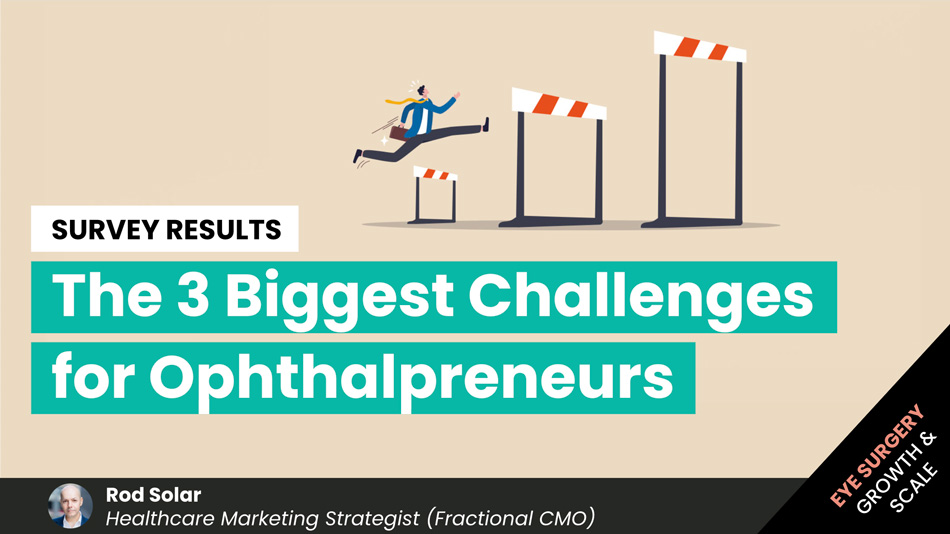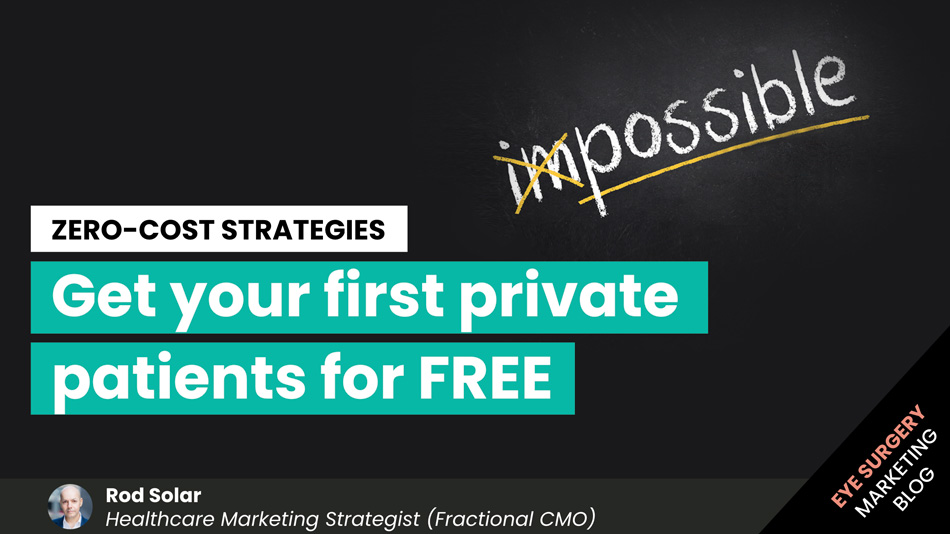How to spot partnership opportunities that will bring you what you most want
Imagine yourself in a perfect business partnership. You get to share responsibility. You’ve got access to resources like capital, time, and shared talents. You and your partners enhance each other’s reputations. You each add value to what you mutually offer your patients. You help each other get your offering in front of more people. You pool your financial resources, introduce each other to each other’s contacts, and enjoy the benefits of each other’s intelligent insights based on real-world experience. Everyone puts in an equal measure of input and everyone shares in the reward.
Sounds lovely, doesn’t it? The only problem is, it’s hard to spot partnership opportunities that will bring you these things that you most want.
In this post, we’ll explain:
- what to look for in a partner
- when it’s best to partner, and when it makes less sense
- who owns the partnership, and lastly,
- what alternatives to partnership exist if you decide that partnership is not the right arrangement for you?
Read on to learn how to evaluate potential partners, identify the things partnerships can provide for you, understand who controls the power in a partnership, and discern whether a partnership or an alternative cooperation makes the most sense.
What should you look for in partnership opportunities?
There are 6 values a business partner can bring to a partnership opportunity:
- Brand Partnerships. Here you seek a person or a brand that might enhance your reputation through association. For example, you might be newer to the field and wish to align yourself with someone your potential customers consider more influential than you. If you lack a known brand, seek out better-known personalities, people who are success stories, and authoritative experts with reputations that can make you look good.
- Product/Service Partnerships. Here you seek a person or organisation that can add value to your service offering and add value to your clients. For example, you may wish to partner with someone with a speciality that you do not offer, but your customers need or desire. When seeking these types of partnership opportunities, seek out people with innovative approaches. Find those who offer services that are already valued by your market, and who offer services that enhance what you offer already.
- Distribution Partnerships. Here you seek people who can get your offering in front of more people. For example, you may wish to find someone who has a larger profile than you, evidenced by a more substantial repeat customer-base, a website with higher traffic, a more significant social media following, or a physical footprint with access to higher footfall. If you lack distribution, seek out people who own good databases or lists, have a more significant readership (or have listeners or viewers), operate out of many locations, have more subscribers or followers, and who enjoy greater online traffic.
- Investment Partnerships. Here you seek to partner with someone who can provide financial resources that out-scale what you can currently invest. For example, a typical approach is to find a partner that merely wants to invest and does not necessarily provide any other value to the partnership apart from that. If you lack access to capital, consider suppliers, clients, angel investors, wealthy friends, or commercial and institutional investors who can invest in your business.
- Introductions Partnership. Here you seek partners who can introduce you to other key people of influence in your category. For example, you may find that partnering with well-connected individuals will open doors that you cannot open alone. If you lack connections, consider partnering with PR firms, networkers, event hosts, industry leaders and industry veterans.
- Insights Partnership. Here you seek to partner with someone who can provide intelligent insights based on real-world best practices. For example, you may wish to partner with someone who offers expertise and experience in an area that you do not have time to build, but could really help your business! If you are seeking specific insights, seek out people who are thought leaders, can act as mentors, are experts in their fields, create original research, or are key customers who can show you the insider secrets of how they think and buy.
You too can bring any of the values above to the partnership. The best partnership opportunties are made up of people who bring different values to the partnership.
Which of the above values should you look for?
It partly depends on whether you, for the moment at least, favour short-term cash or long-term wealth.
Do you seek short-term cash or long-term wealth from a partnership?
Here’s the best advice we can give to help you spot partnership opportunities that will bring you what you most want. Values 1, 2 and 3 are cash-building partnerships. Values 4, 5, and 6 are wealth building partnerships.
What is the difference?
Brand, product/service, and distribution are short-term cash drivers. If your aim from a partnership opportunity is short-term cash, seek out partners who can increase your reputation, compliment your offering, and expand your distribution. On the other hand, if your aim from the partnership is long-term wealth, seek out partners who can provide you with investment, introductions and insights.
The reality of building partnerships
We advise you to partner with people who supply any of the above six values that suit your priorities (cash or wealth).
The fastest and easiest partnership prospects are mates and colleagues. With that said, you should still seek to identify the values each of you brings to the partnership and assess them on their merits.
Partnering with people who may be in a position to refer you clients (e.g. allied professionals who might see your clients before you do) may also be relatively easy but will take more time to build.
A media deal (e.g. writing a column in a newspaper) may be fast to set up, but challenging to achieve.
The toughest and slowest partnerships you’ll establish are those with corporations (e.g. Medical device companies or pharmaceuticals), educational institutions (e.g. universities) and larger organisations (e.g. NHS trusts or government agencies).
Don’t limit your choices to only those who may seem readily willing and available. Consider your whole network and your network’s networks and ask yourself, who do I know or know of, who already has:
- An influential brand? A wide influence? A great reputation?
- A quality service? Who is already pleasing their customers? Whose product or service do you wish you had invented?
- An excellent distribution network? Who has a big list? Who’s already selling to my target market?
- The money to invest in me? Who could benefit from my success and has money? Who understands my business and would want to see me succeed?
- Good connections? Who is known and trusted by a lot of influential people in my industry?
- Unique and rare insights on the best practices in my business? Who previously achieved what I want to achieve?
Who owns the partnership?
Many people set up partnerships intending for mutual benefit. In practice, however, one of the parties will ‘own’ the relationship, meaning, they will have more sway when it comes to decision-making and influence. Knowing this helps you manage your expectations when it comes to terms and expected results.
If you offer less to the partnership, you should expect that you will need to be more flexible and be conscious of the lesser value that you bring. Your partner will expect that you will put in more to enter into and maintain the partnership, therefore, prepare to negotiate terms accordingly.
Conversely, if you bring more to the partnership opportunity by possessing more of the six partnership values than your partner does, then you should expect to get less from the partnership and negotiate terms accordingly.
To determine in advance who will own the relationship, consider the three values of short-term cash partnerships again. The values were:
- Brand
- Product/Service
- Distribution
Think of each value above like the legs in a three-legged stool. The partner who supports the partnership with two of the legs has leverage over the partnership.
When it comes to long-term wealth-building partnerships, the values you are seeking are:
- Insights
- Introductions
- Investment
Again, the partner who possesses the greater potential for the majority of the above values owns the partnership.
Let’s consider a mixed value example. Let’s say a moderately experienced doctor wants to partner with an established partnership comprised of other more established doctors. The younger doctor brings the value of an investment in either time or money. The older doctors bring the values of brand, distribution, insights, and introductions.
It should be evident who will own the partnership and who will likely be able to expect more favourable terms.
To what degree the partnership is of mutual benefit depends on how each party values what the other partner brings. Ideally, the doctors seeking to partner should aim to quantify the assets they bring and make plans to ensure that everyone gets what they want from the partnership.
How do potential partners quantify their assets?
They can do this in writing by agreeing to a limited liability partnership (LLP) or add the younger doctor as a director of a limited company (LTD). Or, they could sign a less official agreement known as a memorandum of understanding (MOU).
However, a contract is only as valuable as the shared values held by all of the partners in a relationship. Without shared values, a deal only serves to grudgingly bind partners to an agreement that they might lack the spirit to maintain. A lack of partnership spirit portends a doomed partnership, whether a written contract exists or not.
The disadvantages of partnership opportunities are many, so choose wisely
The most obvious downside of a partnership is the potential for disagreements. Having shared interests, as opposed to conflicting interests, will go a long way towards negotiating an agreement to even the most contentious debates. Sometimes, having a third partner (or even an external party both partners trust) can break a deadlock when each partner digs into a position.
A flip side of a disagreement is needing to get agreement on major decisions instead of acting independently. This drawback can slow you down to the point where almost nothing can get done. We’ve seen this problem most when partners have different approaches to getting work done (strategic thinkers versus activators) or are in different stages of their careers (e.g. those ambitious to grow versus those comfortable maintaining the status quo). In these cases, planning goes a long way. Reducing the decision-making to agreeing to a plan (instead of every little decision that arises over the course of a project) and assigning one of the partners executive authority can help significantly.
In the case of formal business partnerships, you may expose yourself to liability (in which case you may wish to consider an LLP – limited liability partnership – business structure) and additional taxation (in which case you may prefer to form a limited company).
Because partners in formal partnerships share profits equally, you may find that one or more partners aren’t putting in their fair share of the resources but still reaping the shared rewards. In these cases, written agreements containing clear expectations of responsibility are your best safeguards against misunderstandings and deviating interests down the road.
If you sense, in advance, that the partnership opportunities you are considering have the potential for these drawbacks, you may want to consider alternative cooperative arrangements.
Setting up alternative cooperative arrangements
As we’ve shown, a partnership has many upsides and can dramatically alter the fortunes of your business venture. Partnerships can have significant downsides too. That’s why we stress you seek out partners that offer genuine value so you can ensure its worth the risk of a partnership turning sour.
While LiveseySolar today is an incorporated company (LTD), over the last 20 years of doing business, we’ve involved ourselves in several partnerships. Some have been great. Others have ended less well which led to some of the insights you are reading about here.
Because partnership opportunities carry so many potential downsides, one question we always ask ourselves before considering any partnership is: “Could I get what I want from this potential partnership in another way?”
You can experience the same spirit of a partnership without entering into formal partnerships, but instead forming alternatively structured relationships like:
- building a team of well-known and respected star employees (to enhance your reputation)
- hiring sub-contractors (to offer complimentary product/services)
- hiring time or rooms in facilities that do not belong to you, social media networking, guest blogging, article writing (to get distribution) or participating in one-off joint ventures (typically to promote each other’s services to each other’s markets)
- using commercial lenders (to get capital)
- using referral groups (to get introductions)
- hiring external consultants (to gain insights)
Need advice? Want an objective view of a prospective partnership?
If you are considering getting into a partnership, we advise you to seek the advice of someone who understands how partnerships work in reality and can provide you with an unbiased perspective on whether a connection is right for you.
We advise our healthcare clients on these crucial matters. Let us know if we can help you too.
NOTE: The best way to answer that nagging question about practice growth or marketing or patient volume in the back of your mind is to book a free 15-minute compatibility call. Get some options and go away with a clear idea of what’s possible.
About the author

LiveseySolar
LiveseySolar’s mission is to double the size of 150 cataract and refractive surgery practices. Using our proven marketing frameworks and deep market knowledge, our customers can predictably and sustainably grow their practices so that they can enjoy a healthy balance between both worlds – a successful private practice and a happy life.
Related Posts
Meet our Founders

Rod Solar
Founder & Scalable Business Advisor
Rod co-founded LiveseySolar and acts as a Fractional CMO and Scalable Business Advisor for our customers. He’s on a mission to help transform the lives of 10,000 people with vision correction surgery by 2024. To achieve that, he inspires his customers to make confident decisions that will help 50,000 people take the first step towards vision correction.
LiveseySolar completely transformed the way we were approaching this… We’ve gone from having just the dream of having a practice to having a practice up and running with people making inquiries and booking for procedures… It’s extremely pleasing. We feel lucky we connected with LiveseySolar.
— Dr Matthew Russell, MBChB, FRANZCO, specialist ophthalmic surgeon and founder of VSON and OKKO

Laura Livesey
Founder & CEO
Laura Livesey is the co-founder & CEO of LiveseySolar. She has developed powerful refractive surgery marketing systems that increase patient volumes and profits for doctors, clinics, and hospitals, since 1997.
Rod and Laura know as much about marketing surgery to patients as I know about performing it. They are an expert in the field of laser eye surgery marketing. They know this industry inside out. I believe that they could help many companies in a variety of areas including marketing materials, sales training and marketing support for doctors.
— Prof. Dan Reinstein, MD MA FRSC DABO, founder of the London Vision Clinic, UK











